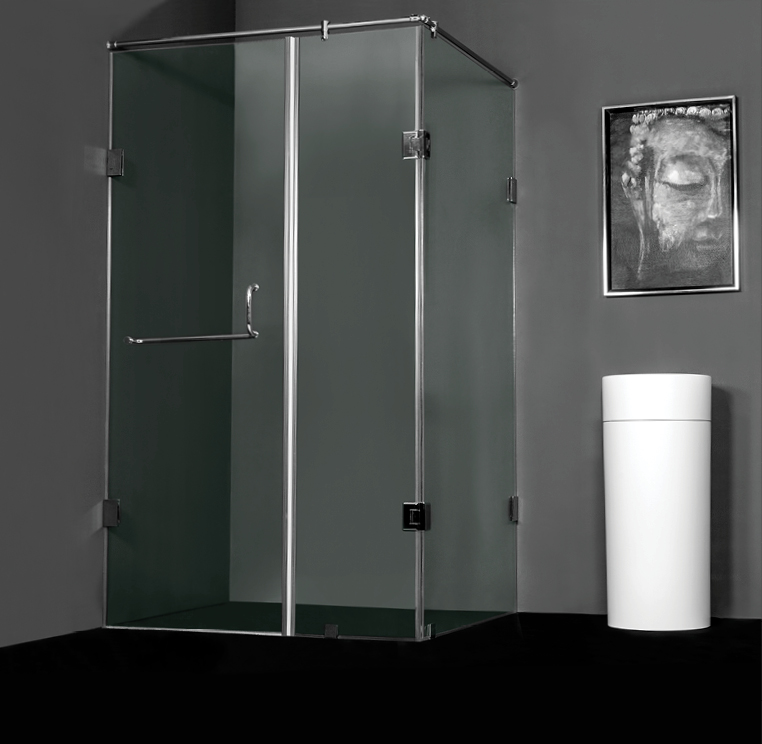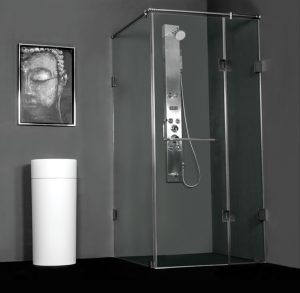A nice, hot shower can be just the thing to wake you up in the morning or wash away the day’s stresses. But without proper care, your shower enclosure can become grimy and moldy faster than you may think. Learning some simple maintenance tips will help your investment stay looking new while creating a more pleasant and healthier bathing environment.
In this guide, we’ll cover how to care for common shower enclosure types to prevent issues like soap buildup, mildew growth and glass fogging. With some basic preventative steps and by addressing problems as they arise, you can keep your shower enclosure clean and functional for years to come.
Popular Shower Enclosure Materials
There are a few main options when it comes to shower enclosure materials these days. Each has slightly different care needs.
Glass Shower Enclosures
Glass is elegant, easy to clean and great for opening up small spaces. Tempered safety glass doors and partitions are the most common in modern bathroom designs. The smooth nonporous surface prevents mold and bacteria growth when properly cared for. Frequent drying and occasional scrubbing keeps glass clear and spotless.
Acrylic Shower Walls
Acrylic sheets can be mounted right over existing tile or drywall to create a waterproof barrier. The high-gloss plastic is moisture resistant and easy to wipe down. Over time, acrylic can develop light scratches and soap film buildup. Using non-abrasive cleaners and soft scrub pads keeps walls looking freshly installed.
Fiberglass Stall Showers
Fiberglass reinforced plastic shower stalls are waterproof, mold resistant and durable. Over time, strong cleaners can dull the glossy gel coat finish. For routine cleaning, gentle dish soap combined with a non-abrasive sponge prevents scratches and keeps surfaces pristine between deeper cleans.
Preventative Maintenance Rituals
Establishing daily and weekly cleaning rituals is key to avoiding time-consuming scrubbing sessions down the road. Just a few minutes a day keeps soap scum, hard water deposits and mildew at bay.
Daily Maintenance
Make wiping down walls and doors part of your post-shower routine. After towel drying off, grab a squeegee to clear droplets. This simple habit prevents mineral spots and soap film buildup. For glass doors and walls, spray a light mist of equal parts white vinegar and water. Squeegee surface then wipe with a clean microfiber cloth. The mild acid dissolves residue while the cloth polishes.
Weekly Maintenance
Set aside 5-10 minutes each week for a more thorough scrub down. Check corners, joints and exterior trim for any mildew growth. Spot treat mold with an enzyme cleaner or diluted bleach solution if needed. Apply using an old toothbrush then rinse clean.
Next, spray walls with a non-toxic enzyme-based soap scum dissolver. Let sit 5 minutes before scrubbing with a non-abrasive sponge in circular motions. Thoroughly rinse walls then squeegee dry. Last, inspect caulk lines around the enclosure perimeter. If cracked or missing, remove old caulk and re-seal gaps with a flexible waterproof product to prevent moisture seeping behind walls.
Monthly Maintenance
Plan to deep clean your enclosure at least monthly depending on frequency of use. Remove soap bottles and accessories. Mix a mild, non-abrasive bathroom cleaner with warm water in a spray bottle. Apply foam liberally over all surfaces then let sit for 5-10 minutes allowing chemicals to dissolve buildup. Scrub walls using a nylon-bristle scrub brush, then rinse thoroughly. Squeegee water off glass and wipe down all surfaces with a microfiber cloth.
In addition, check that door seals and sweeps are firmly attached and in good condition. Damaged seals can allow water seepage under walls and floors leading to hidden mold or rot issues. Also, inspect surfaces for any cracks, chips or deterioration that may require professional repairs.
Troubleshooting Common Problems
No matter how diligent your maintenance routine, issues can pop up now and then. Learning to recognize and properly address them keeps small problems from turning into costly headaches down the road.
Mold and Mildew
Despite preventative measures, moist conditions may allow mold colonies or mildew growth in hidden crevices. First try spraying problem areas with full strength white vinegar. The mild acid kills many mold strains and lifts some staining. For more severe growth, don full rubber gloves along with eye and respiratory protection. Mix 1 cup bleach per 1 gallon of water. Use a bristle brush dipped in the bleach solution to thoroughly scrub affected areas. Allow solution to penetrate 5 minutes before a final rinse. Improve post-shower ventilation by running the bath fan for at least 30 minutes or opening a window to allow humidity to fully clear.
Soap Scum Accumulation
While vinegar solutions dissolve some soap residue, stubborn accumulations may need an enzyme-based soap scum remover. These products break down the ingredient responsible for soap film build up without harsh scrubbing that may scratch delicate shower enclosure materials. Apply foam cleaner then let it work about 15 minutes before scrubbing and rinsing away. Hard water wreaks havoc with soap, causing the calcium and magnesium ions to bind together into sticky insoluble molecules that tenaciously grip to surfaces. Installing a water softener can help reduce ongoing soap issues in hard water areas.
Glass Fogging Issues
If beautifully clear glass walls constantly turn opaque and foggy mid-shower despite diligent squeegeeing, the original protective coating may have worn off. Re-sealing with a product designed for glass shower doors refreshes the surface treatment allowing water to sheet cleanly again. Deep clean glass first with a non-acid based cleaner then apply two thin, even coats allowing proper drying time between.
Knowing When to Call In a Pro
While armed with the right techniques and products, most homeowners can handle routine shower enclosure cleaning and maintenance themselves. But it’s also helpful to recognize issues best left to the work of qualified professionals.
For instance, if worsening leaks around enclosure seams lead to water intrusion and wall damage behind, it’s smart to call in a re-surfacing specialist to redo failing caulk or even replace compromised underlying materials. Extensive mold remediation also often involves updating ventilation systems and affected structural components.
Lastly, if deep abrasions, etched lines or cracks appear on glass doors or panels indicating compromised integrity, replacement by a licensed professional ensures new materials are properly specified and safely installed according to code.
Maintaining Your Investment Over the Long Haul
By adopting simple regular maintenance practices and understanding how to remedy occasional issues before they escalate, you can enjoy your shower enclosure for years of comfortable steamy soaks. Protect this important investment in your home by taking good care from day one. Establish smart preventative routines during the honeymoon phase then work to quickly resolve problems should any appear down the road. With some basic know-how, common sense and consistent effort, your shower enclosure can remain a pristine, health-supporting oasis.




